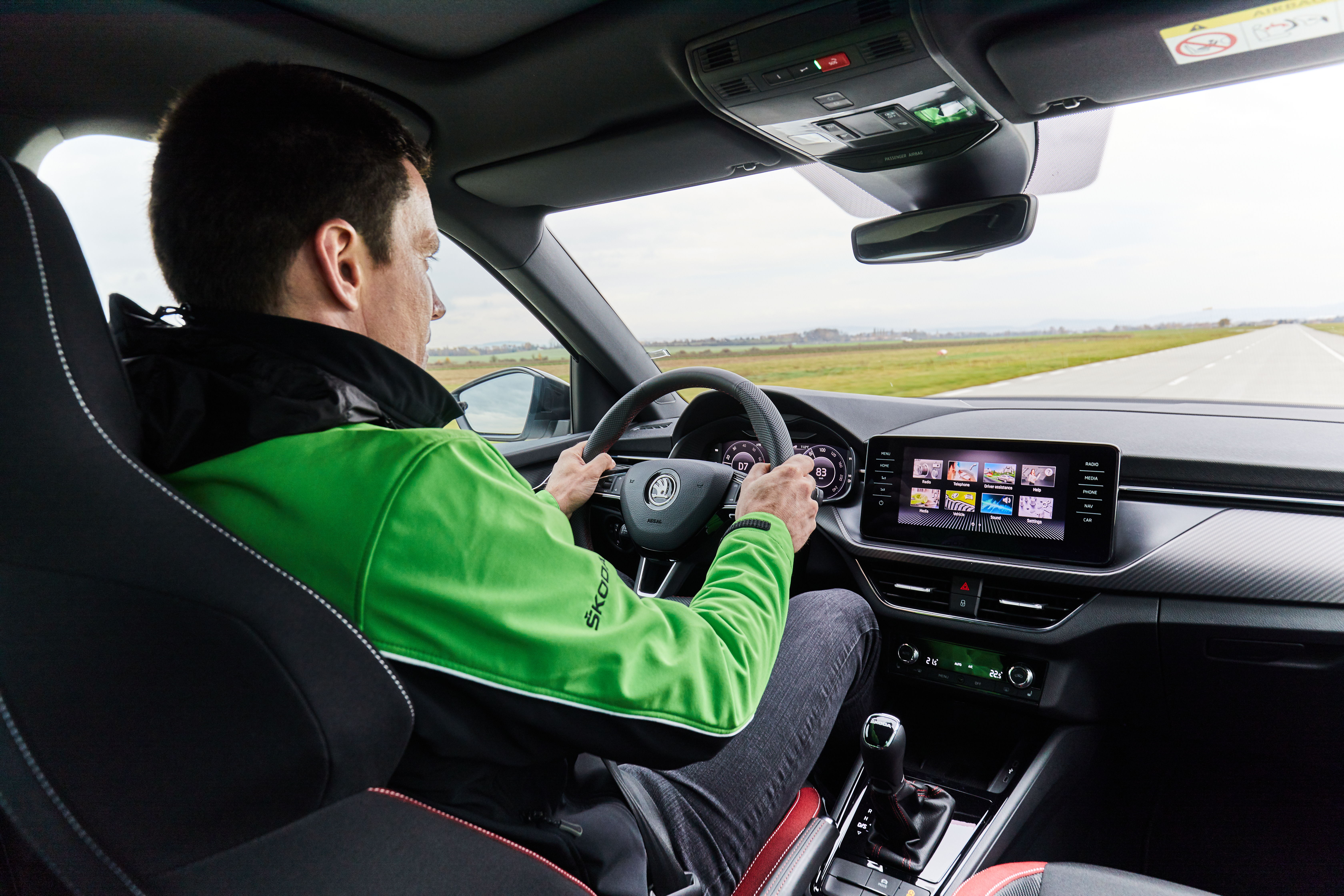Stay safe this winter with pro tips from rally world champion Jan Kopecký

› ŠKODA works driver advises driving with foresight in challenging weather conditions
› “Adjust speed, maintain adequate distance from the car in front and avoid distractions”
› Winter tyres with a sufficient tread depth of at least four millimetres are a must
Mladá Boleslav, 27 December 2019 – In rain or snow, driving in the winter months requires
great care. It can become dangerous at temperatures around freezing because the
conditions on the road can change quickly. In this interview, Czech rally professional Jan
Kopecký, ŠKODA works driver and WRC2 world champion from 2018 gives valuable tips on
how drivers can recognise treacherous road conditions early on and keep their ŠKODA
under control even in challenging situations.
Jan, as a rally driver you are used to driving in challenging conditions such as on wet roads,
in snow and on ice. On public roads, drivers can also find themselves in these situations,
especially in autumn and winter. What can we do to be prepared?
Jan Kopecký: The most important advice that every driver should bear in mind at all times, not
only in autumn and winter: Don’t let yourself be distracted at the wheel, always drive at a sufficient
distance from other road users and maintain an appropriate speed. Drivers should check the
weather forecast before setting off and allow additional time if necessary. Starting the journey
earlier can reduce stress, especially on the way to the office. Before setting off, the car should be
completely free of snow and ice. This also includes scraping the roof and the bonnet. Only people
who have good visibility can react well. Besides, cars driving behind must not be endangered by
falling snow or ice. Your driving style must always adapt to the conditions of the road. Every driver
should prepare their vehicle for journeys in the cold season. Winter tyres with a sufficient tread
depth of at least four millimetres are a must.
How can we recognise that the road is going to be slippery or icy?
Kopecký: At low temperatures, darker patches on the road are a sign of slippery surfaces; if the
road has a glittery appearance, you should ease off the accelerator. When there is snow on the
ground, the road surface is often slippery; salt can turn the snow into slush, which also increases
the risk of slipping. Your speed should also be reduced when the snow is firm because the road
could be frozen under the snow, which you as a driver may not immediately notice. Therefore, drive
with foresight and pay attention to your distance from other road users. In such situations, you
should always maintain a gap of three seconds from the person in front.
What is the best way to react when you approach a slippery section of road?
Kopecký: Rule number one: keep calm and do not panic. In principle, the driver should reduce
their speed by at least half on a snowy or icy road because your braking distance is three to four
times longer in these weather conditions. To avoid the car slipping and getting out of control, abrupt
steering and braking should be avoided. Personally, I either don’t drive on slippery roads at all or I
drive as if I had fresh eggs in the boot. In vehicles with a manual transmission, the clutch should be
depressed if the vehicle skids, then the wheels only have to transmit longitudinal forces.
Nevertheless, if the car slips on a bend, it is usually enough to steer into the slide, i.e. steer the
direction the car is sliding to regain control. Changing lanes when there is snow between lanes also
works best if you step on the clutch and let the car roll into the other lane with a little more
momentum.
Both making adjustments to our driving style and having the right equipment can prevent
problems on winder roads. What should motorists have in the car with them during the
winter?
Kopecký: You should have an ice scraper and a brush to remove snow from your car. At ŠKODA,
these two Simply Clever features are included as standard in the new OCTAVIA in the fuel cap and
the door. Sometimes a de-icer spray can also be helpful: It makes the job much easier if the layer of
ice is particularly thick or you do not have much strength. Snow chains are a must when driving in
the mountains, but putting them on should be practised beforehand. There should also be sufficient
windscreen washer fluid and antifreeze in the water tank. With older car batteries, a battery check is
highly recommended before winter sets in.
What can we do to prevent the wheels from spinning when pulling away on slippery roads?
Kopecký: When driving a modern ŠKODA, traction control usually helps in such cases. In vehicles
with a manual gearbox, you can also engage second gear to start and play a bit with the clutch and
accelerator pedal to avoid stalling.
